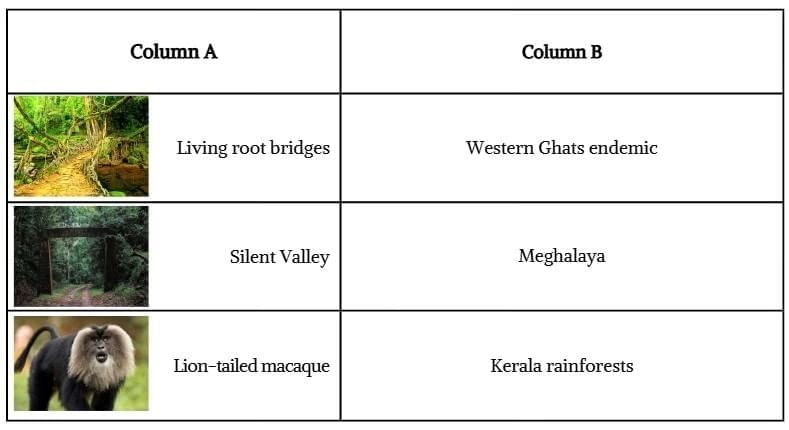Unit Test: Some Unique Places | Our Wondrous World Class 5 - New NCERT PDF Download
Time: 45 Minutes
M.M.: 20
Attempt all questions.
Question numbers 1 to 6 carry 1 mark each.
Question numbers 7 to 9 carry 3 marks each.
Question number 10 carries 5 marks.
Q1. The southernmost tip of India is called:
(a) Kanyakumari
(b) Indira Point
(c) Dhanushkodi
(d) Rameswaram
Q2. Fill in the blanks:
Mangroves have special ______ that help them breathe in muddy, salty water.
Q3. True or False:
The Sundarbans is the largest mangrove forest in the world.
Q4. Name one unique bird found only in the Andaman Islands.
Q5. Match the following:
Q6. Why are protected areas important?
(a) To allow more construction
(b) To protect rare animals and forests
(c) To mine freely
(d) To cut more trees
Q7. List three reasons why mangroves are important for coastal regions.
Q8. Give three examples of how people in the Northeast live in harmony with nature.
Q9. Why are the Western Ghats called a biodiversity hotspot? Give three points.
Q10. You are planning an eco-trip to Andaman & Nicobar and Sundarbans. Prepare a simple plan including:
(a) Two safety measures for ferries/boats,
(b) Two “do-nots” in mangrove/reef areas,
(c) Two learning goals about local wildlife/culture.
Find Solutions for the Unit Test - Here
|
14 videos|144 docs|10 tests
|
FAQs on Unit Test: Some Unique Places - Our Wondrous World Class 5 - New NCERT
| 1. What are some unique places that can be visited around the world? |  |
| 2. Why are unique places important for tourism? |  |
| 3. How can visiting unique places benefit educational experiences? |  |
| 4. What role do unique places play in preserving cultural heritage? |  |
| 5. How can travelers ensure they are respectful when visiting unique places? |  |





















